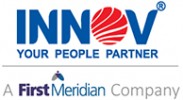
i
Virtual
Employee
Filter interviews by
Virtual Employee Cyber Security Analyst Interview Questions and Answers
Virtual Employee Cyber Security Analyst Interview Experiences
1 interview found
I applied via Approached by Company and was interviewed before Jul 2021. There were 3 interview rounds.

(2 Questions)
- Q1. Tell me about yourself
- Q2. Basic terminologies in cyber security
- Ans.
Basic terminologies in cyber security
Malware
Phishing
Firewall
Encryption
Vulnerability
Patch
Intrusion Detection System
Social Engineering
Two-Factor Authentication
(7 Questions)
- Q1. Tell me about any situation where you have been a leader in your life
- Q2. Tell me about any situation where you have worked in a team
- Q3. Tell me about the OSI model
- Ans.
The OSI model is a conceptual model that describes how data is transmitted over a network.
OSI stands for Open Systems Interconnection
It has 7 layers: Physical, Data Link, Network, Transport, Session, Presentation, and Application
Each layer has a specific function and communicates with adjacent layers
The model helps ensure interoperability between different network devices and software
Example: HTTP operates at the Appli...
- Q4. Tell me about HTTP vs HTTPS
- Ans.
HTTP is unencrypted while HTTPS is encrypted. HTTPS provides secure communication over the internet.
HTTP stands for Hypertext Transfer Protocol while HTTPS stands for Hypertext Transfer Protocol Secure
HTTP is vulnerable to attacks like man-in-the-middle while HTTPS is secure
HTTPS uses SSL/TLS certificates to encrypt data while HTTP does not
HTTPS is used for secure online transactions like online banking, e-commerce, et...
- Q5. Tell me about the top 10 OWASP vulnerabilities
- Q6. Tell me about common Cyber Attacks
- Q7. Tell me about how to mitigate common cyber attacks
- Ans.
Mitigating common cyber attacks involves implementing strong passwords, regular software updates, and employee training.
Use strong passwords and two-factor authentication
Regularly update software and operating systems
Train employees on how to identify and avoid phishing scams
Implement firewalls and antivirus software
Limit access to sensitive data and regularly backup important files
Interview Preparation Tips
- OWASP
- Basics of Networking
- Basics of Cyber Security
- Types of Cyber Attacks
- Email Headers
- OSINT
Skills evaluated in this interview
Top trending discussions






Interview questions from similar companies

I applied via Naukri.com and was interviewed before Feb 2020. There were 3 interview rounds.
Interview Questionnaire
2 Questions
- Q1. Quite strong questions on security analysts.
- Q2. Need to ask good CTC if client has agreed to take you.
Interview Preparation Tips

I applied via Walk-in and was interviewed in Mar 2021. There was 1 interview round.
Interview Questionnaire
4 Questions
- Q1. Tell me about youself
- Q2. What is c
- Ans.
C is a general-purpose programming language known for its efficiency and low-level control.
C was developed by Dennis Ritchie at Bell Labs in the 1970s.
It is widely used for system programming, embedded systems, and developing operating systems.
C is known for its simplicity, allowing direct memory manipulation and efficient code execution.
It influenced the development of many other programming languages, such as C++, Ja...
- Q3. What is java
- Q4. What is lamda
Interview Preparation Tips
Skills evaluated in this interview

I applied via Naukri.com
Interview Questionnaire
3 Questions
- Q1. Self introduction
- Q2. Working knowledge in current company and overall job profile.
- Q3. Accounts related questions
Interview Preparation Tips

Interview Questionnaire
1 Question
- Q1. Tell me about your Self.
Interview Preparation Tips

I applied via Naukri.com and was interviewed in Jan 2021. There was 1 interview round.
Interview Questionnaire
3 Questions
- Q1. Quick introduction, followed by previous work experience.
- Q2. SQL joins, constraints, aggregate functions, analytic functions, stored procedures and functions, cursors, triggers, views, indexes, common table expression, temporary tables, materialized views.
- Q3. Python datatypes, functions, simple programs to code, methods, exception handling.
Interview Preparation Tips

(1 Question)
- Q1. First Round :Manual testing ,Capital Market, Linux, SQL

I applied via Naukri.com and was interviewed in Feb 2022. There were 2 interview rounds.
(1 Question)
- Q1. Just should be fluent aboutvthe process we do
(1 Question)
- Q1. Same as round 1 Just asks from the process we do
Interview Preparation Tips

I applied via Job Fair
Java 8 programs, string buffer and builder
About traffic in Banglore and the project

(1 Question)
- Q1. Skillset worked on
Virtual Employee Interview FAQs
Tell us how to improve this page.
Virtual Employee Interviews By Designations
- Virtual Employee Software Engineer Interview Questions
- Virtual Employee DOT NET Developer Interview Questions
- Virtual Employee Digital Marketer Interview Questions
- Virtual Employee Associate Interview Questions
- Virtual Employee Project Manager Interview Questions
- Virtual Employee Software Engineer Trainee Interview Questions
- Virtual Employee Senior Consultant Interview Questions
- Virtual Employee HR Manager Interview Questions
- Show more
Interview Questions for Popular Designations
- Senior Analyst Interview Questions
- Security Analyst Interview Questions
- Information Security Analyst Interview Questions
- SOC Analyst Interview Questions
- Cyber Security Engineer Interview Questions
- Senior Security Analyst Interview Questions
- Cyber Security Consultant Interview Questions
- Cyber Security Specialist Interview Questions
- Show more
Interview Questions from Similar Companies
Virtual Employee Cyber Security Analyst Reviews and Ratings
based on 5 reviews
Rating in categories
|
Software Engineer
214
salaries
| ₹5.7 L/yr - ₹14 L/yr |
|
Software Developer
131
salaries
| ₹4.6 L/yr - ₹11.6 L/yr |
|
Senior Software Engineer
117
salaries
| ₹8.7 L/yr - ₹15.8 L/yr |
|
Senior Executive
70
salaries
| ₹4.1 L/yr - ₹9.7 L/yr |
|
Senior Associate
61
salaries
| ₹3.8 L/yr - ₹7.4 L/yr |

Randstad

Team Lease

Innovsource Services

LanceSoft
- Home >
- Interviews >
- Virtual Employee Interview Questions












